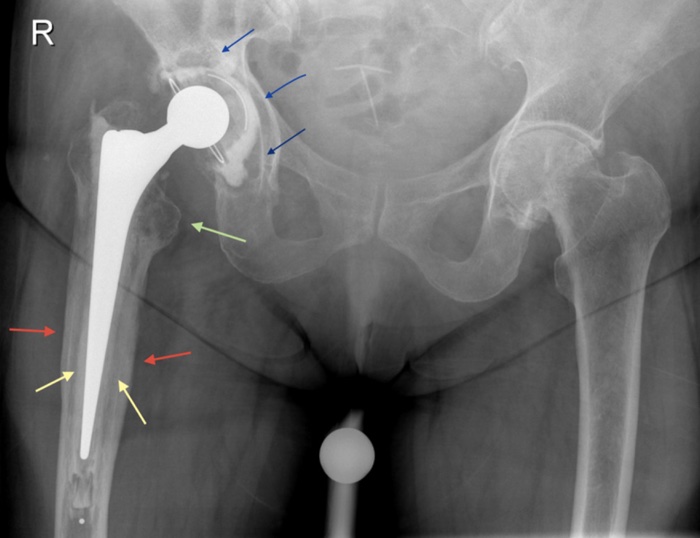Occasional nicks, scratches, and bites can be an unavoidable consequence of being a pet owner, when our animal friends unintentionally hurt us.
But one British woman's experience shows we should never assume such minor pet-inflicted injuries are necessarily harmless – because this otherwise healthy 66-year-old ended up having to get her hip replaced after being scratched by her pet dog.
The patient, who had previously undergone a total hip replacement in 1997, presented to her orthopaedist after experiencing groin and buttock pain for a number of months.
At first, the woman feared she might have developed cancer in the region, so she was understandably relieved when scans showed no evidence of a tumour – but doctors weren't entirely sure what the source of her pain was.
Suspecting some kind of infection in the woman's prosthetic joint, they took a biopsy from her hip to see if they could detect any pathogens in her blood.
Cultivating the sample in a microbiology lab, six out of seven of the lab cultures indicated nothing – but the seventh revealed a gram-negative bacterium that couldn't be identified.
"Unfortunately, the biopsy results were inconclusive," the anonymous patient recalls.
"All this time, the pain was becoming worse, and I was becoming increasingly frightened by what might actually be happening to me."
A second biopsy was eventually taken, again showing evidence of some kind of unknown bacteria, so the doctors sent the samples off to a specialist microbiology reference laboratory at Cardiff University for further identification.
By this point, some 14 months after the woman first approached her doctors, the "horrendous pain" caused by the infection was almost unbearable, with imaging showing significant cortical destruction near the hip end of the femur due to the infection.
 Hettiarachchi et al.
Hettiarachchi et al.
In the scan image above, you can see loosening of the acetabular cup (blue arrows), loss of bone tissue (green arrow), new bone growth (red arrows) and less density between the bone and the prosthetic cement (yellow arrows), which the researchers took to be highly suggestive of infection of the prosthesis.
Using a molecular technique called 16S PCR, scientists finally figured out the source of the problem: an extremely rare infection by Capnocytophaga canimorsus, only reported in prosthetic devices like this twice before in medical literature, and never before with such persistent, slowly developing symptoms.
While C. canimorsus doesn't turn up often in things like artificial hips, it is in fact the primary bacterial risk from dog bites (the bug lives in about one in four dog mouths, and is also present in cats), and can cause septicaemia, meningitis, endocarditis, and ocular infections if left unchecked.
In this case, the patient recalled she had been scratched by her dog (whose breed remains unknown) on the back of her hand about nine months before seeing doctors about her groin pain.
That scratch was all it took.
The doctors hypothesise the animal transferred the bacteria from the oral flora in its mouth to its claws by licking its paws, which subsequently enabled the woman to become infected by nothing more than a scratch.
Luckily for her, after several months of intense pain, she was administered a course of antibiotics to kill the infection, and received a new artificial hip.
As of her last check-up 15 months after the surgery, the doctors report she is functioning well with a pain-free hip – although the mysterious, painful memory of her brush with C. canimorsus is not something she can easily forget.
"The worry never goes away," she says.
"The fear that something similar could happen again is always at the forefront of my mind."
There's no word on how the dog is getting on – but given what we know about canine psychology, it's safe to say it's probably not feeling too guilty about things.
The findings are reported in BMJ Case Reports.
